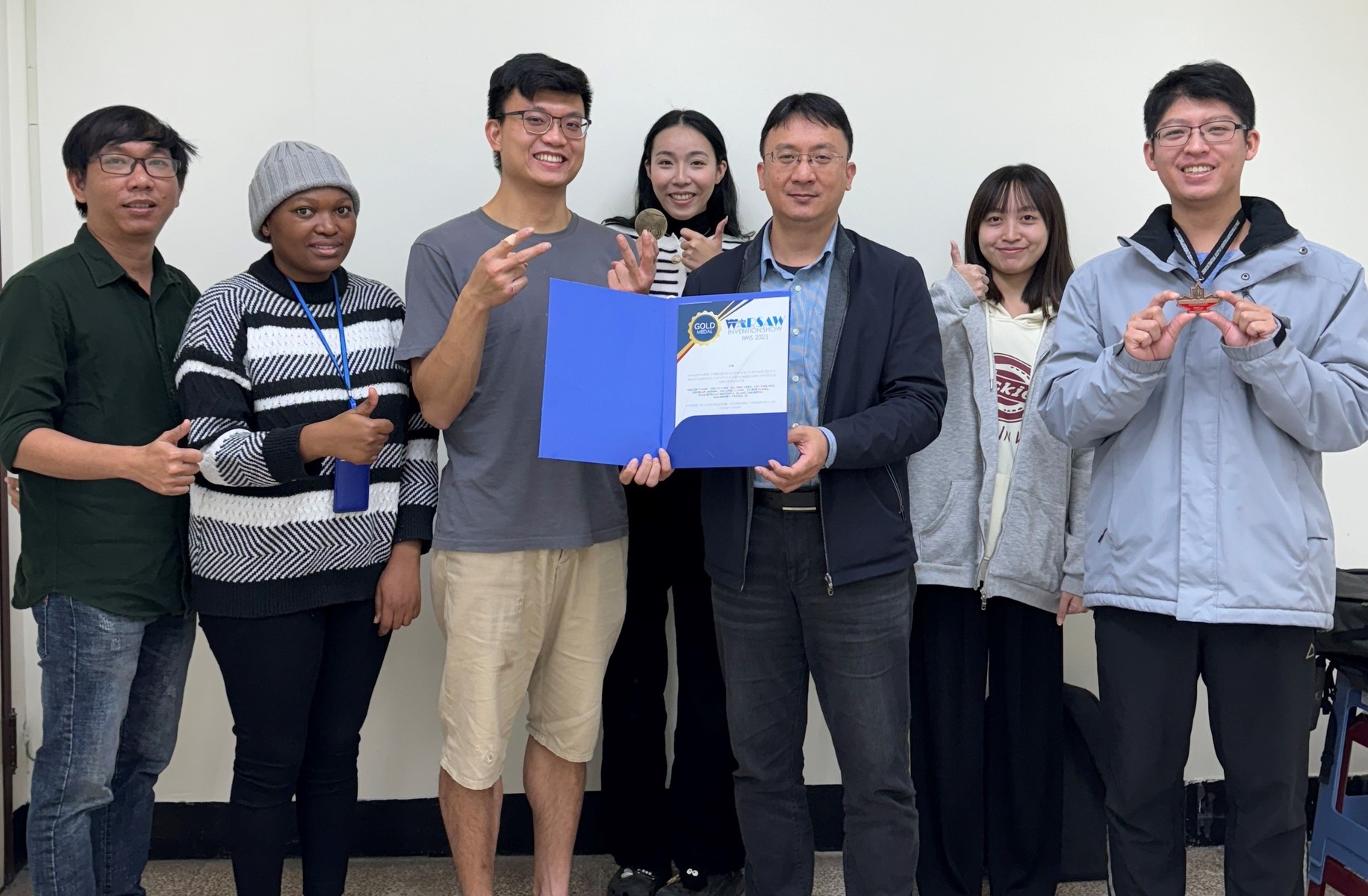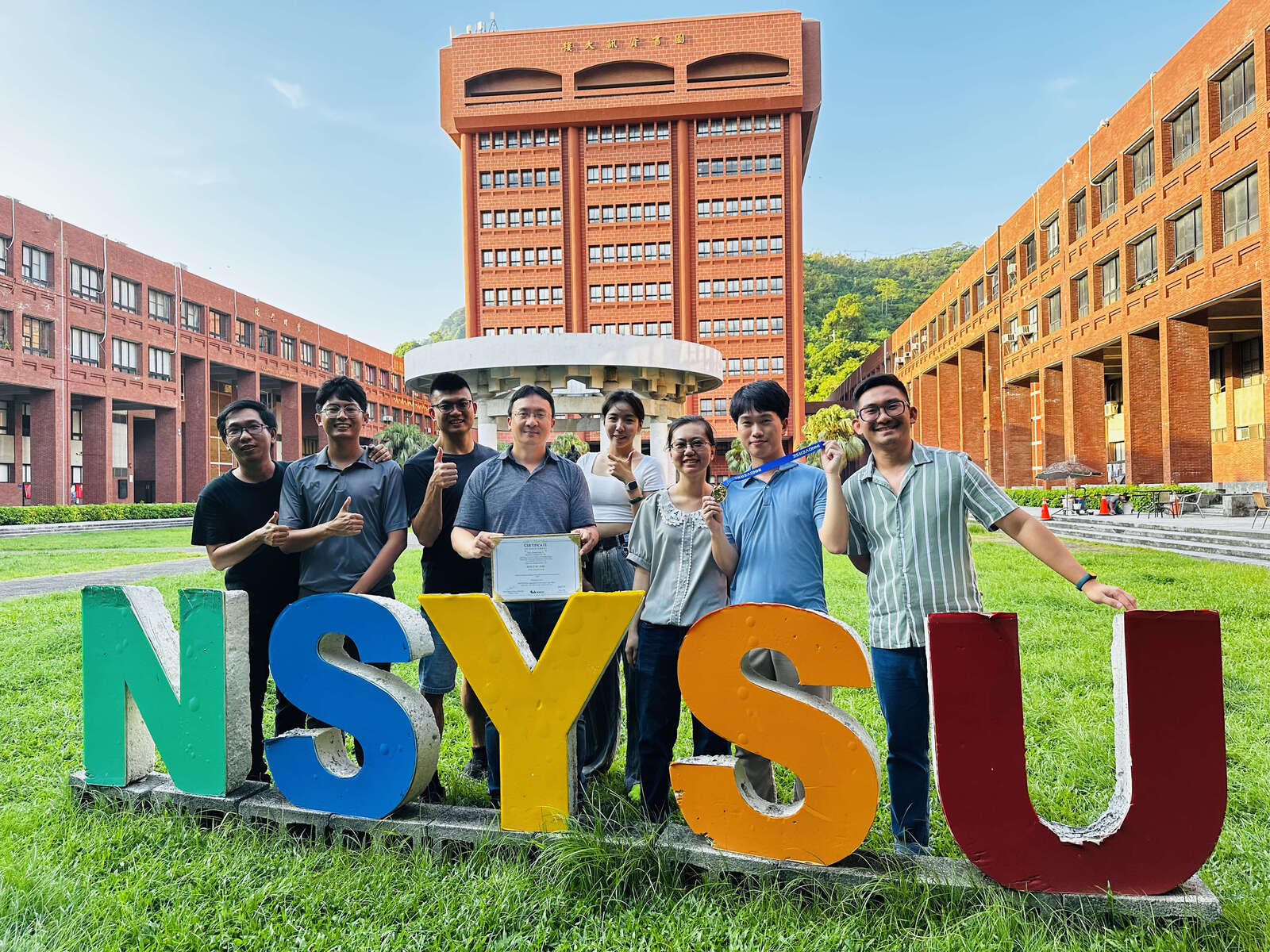NSYSU converted agricultural waste and carbon dioxide into green gold and won 2 gold medals at the international invention exhibitions


2024-07-30
A team led by Associate Professor Ken-Lin Chang of the Institute of Environmental Engineering at National Sun Yat-sen University (NSYSU) has developed innovative technologies to convert useless agricultural waste and carbon dioxide into high-value-added Cellulose Nanofiber (CNF) and chemical materials respectively. These technologies utilize environmentally sustainable green processes and solar power. These two technologies were shined at the International Warsaw Invention Show (IWIS) 2023 and the INNOVERSE Innovation & Invention Expo 2023 in the USA, and both won gold medals.
Ken-Lin Chang stated that lignocellulose is an abundant and easily obtainable natural resource, and Cellulose Nanofiber (CNF) derived from it is a significant product. Its excellent properties of high biodegradability, specific surface area, and mechanical strength can be used to improve material limits, tear strength, hydrophobicity, and abrasion resistance. It can also be utilized to produce nanocomposites and to derive pigments, coatings, adhesives, thermosetting plastics, thermoplastics, hydrogels, cosmetics, pharmaceutical additives, optical components, nano filters, bulletproof vests, medical equipment, and many other high-value-added products with a wide range of applications. However, the current preparation of Cellulose Nanofiber primarily uses acid treatment combined with the physical grinding method, which results in a large amount of acid waste liquid, leading to secondary pollution and equipment corrosion.
Ken-Lin Chang's research team has developed an efficient and environmentally friendly green process that uses agricultural waste rice straw as raw material, Deep Eutectic Solvents (DES) as a pretreatment solvent, and an ultrasonic crusher to disrupt the structural integrity of lignocellulose. This process effectively removes the wax layer and silicon dioxide on the surface of lignocellulose without adding any chemicals, thereby avoiding secondary pollution and keeping costs low. This process can finally achieve a Cellulose Nanofiber yield of up to 17%, with an average fiber length of 318 nanometers. This method not only reduces agricultural waste but also prepares important biomass materials. This innovative technology won the gold medal at the International Warsaw Invention Show (IWIS) in December 2023.
Another new green carbon reduction technology developed by the team uses low-temperature plasma technology to ionize, excite, and dissociate carbon dioxide molecules through high-energy electrons generated by reactions, which can convert the captured carbon dioxide into high-value-added products such as chemicals and fuels. It overcomes the difficulties of current conversion technology, which makes it challenging to break highly stable carbon dioxide molecules and requires substantial energy, presenting a promising carbon reduction technology.
Ken-Lin Chang pointed out that the new green energy technology invented by the team utilizes solar energy to power the non-thermal plasma system. Through catalytic conversion, carbon dioxide in the atmosphere can be reduced and reused effectively. It has been tested through the Artificial Neural Network (ANN) analysis and MATLAB R2022b simulation to achieve optimal carbon dioxide conversion efficiency. The low-temperature plasma reactor operates at normal temperature and pressure, making it easy to scale and apply without relying on other Earth's resources. It contributes significantly to the global net zero initiative and the United Nations’ Sustainable Development Goals, earning recognition with a gold medal at the INNOVERSE Innovation & Invention Expo 2023 in the USA.
A team led by Associate Professor Ken-Lin Chang of the Institute of Environmental Engineering at National Sun Yat-sen University (NSYSU) has developed innovative technologies to convert useless agricultural waste and carbon dioxide into high-value-added Cellulose Nanofiber (CNF) and chemical materials respectively. These technologies utilize environmentally sustainable green processes and solar power. These two technologies were shined at the International Warsaw Invention Show (IWIS) 2023 and the INNOVERSE Innovation & Invention Expo 2023 in the USA, and both won gold medals.
Ken-Lin Chang stated that lignocellulose is an abundant and easily obtainable natural resource, and Cellulose Nanofiber (CNF) derived from it is a significant product. Its excellent properties of high biodegradability, specific surface area, and mechanical strength can be used to improve material limits, tear strength, hydrophobicity, and abrasion resistance. It can also be utilized to produce nanocomposites and to derive pigments, coatings, adhesives, thermosetting plastics, thermoplastics, hydrogels, cosmetics, pharmaceutical additives, optical components, nano filters, bulletproof vests, medical equipment, and many other high-value-added products with a wide range of applications. However, the current preparation of Cellulose Nanofiber primarily uses acid treatment combined with the physical grinding method, which results in a large amount of acid waste liquid, leading to secondary pollution and equipment corrosion.
Ken-Lin Chang's research team has developed an efficient and environmentally friendly green process that uses agricultural waste rice straw as raw material, Deep Eutectic Solvents (DES) as a pretreatment solvent, and an ultrasonic crusher to disrupt the structural integrity of lignocellulose. This process effectively removes the wax layer and silicon dioxide on the surface of lignocellulose without adding any chemicals, thereby avoiding secondary pollution and keeping costs low. This process can finally achieve a Cellulose Nanofiber yield of up to 17%, with an average fiber length of 318 nanometers. This method not only reduces agricultural waste but also prepares important biomass materials. This innovative technology won the gold medal at the International Warsaw Invention Show (IWIS) in December 2023.
Another new green carbon reduction technology developed by the team uses low-temperature plasma technology to ionize, excite, and dissociate carbon dioxide molecules through high-energy electrons generated by reactions, which can convert the captured carbon dioxide into high-value-added products such as chemicals and fuels. It overcomes the difficulties of current conversion technology, which makes it challenging to break highly stable carbon dioxide molecules and requires substantial energy, presenting a promising carbon reduction technology.
Ken-Lin Chang pointed out that the new green energy technology invented by the team utilizes solar energy to power the non-thermal plasma system. Through catalytic conversion, carbon dioxide in the atmosphere can be reduced and reused effectively. It has been tested through the Artificial Neural Network (ANN) analysis and MATLAB R2022b simulation to achieve optimal carbon dioxide conversion efficiency. The low-temperature plasma reactor operates at normal temperature and pressure, making it easy to scale and apply without relying on other Earth's resources. It contributes significantly to the global net zero initiative and the United Nations’ Sustainable Development Goals, earning recognition with a gold medal at the INNOVERSE Innovation & Invention Expo 2023 in the USA.
Click Num:
Share
